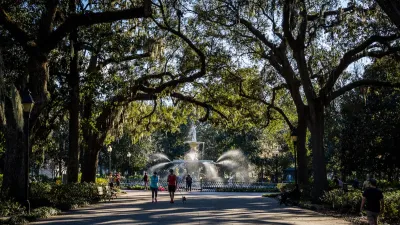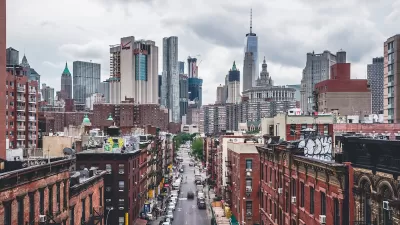If you run a google.com search for “The Death of Suburbia” you will find about 24,000 ‘hits.’ Some of the gloating over suburbia’s alleged demise is based on the facts that (some) suburbs have been hit hard by the current economic downturn, and that (some) city neighborhoods have become more expensive per square foot than than suburbs. (1) But suburbia as a whole continues to gain population.
If you run a google.com search for "The Death of Suburbia"
you will find about 24,000 ‘hits.' Some
of the gloating over suburbia's alleged demise is based on the facts that
(some) suburbs have been hit hard by the current economic downturn, and that
(some) city neighborhoods have become more expensive per square foot than than
suburbs. (1) But suburbia as a whole
continues to gain population.
How do we reconcile these realities? My visit to Tel Aviv last December gave me a
hint. Tel Aviv's population nosedived in the third quarter of the 20th
century (from 386,000 in the 1961 to 317,000 in 1988)(2) and then rebounded to
over 400,000 in the past two decades.(3)
But when I went to a small party in Tel Aviv, I learned that many of my
fellow guests (mostly thirty- and forty-something singles and couples) were
living in outlying suburbs because they were priced out of Tel Aviv – an
experience similar to my own in New York (insofar as I was priced out of
Manhattan and chose Queens instead).
Over the past couple of decades, some American regions have
become like Tel Aviv- places where urban life is more common, but less
affordable, than it once was. In the
1970s, city life was often something that well-off people fled from in disgust;
today, city life is often a luxury good – something that many well-off people
choose, and many slightly less well-off people wish they could afford. Instead of being the thrift store of American metropolitan
areas, the most urban parts of (some) cities have become the Neiman-Marcus of America.
Does this mean suburbia is "dead"? Of course not- any more than thrift stores (or
dollar stores or Wal-Mart) are dead.
Just as more people shop at Wal-Mart than at Neiman Marcus, more people
live and shop in suburbs than in cities.
But it does mean that policymakers are faced with a
different set of challenges than in, say, 1980.
Twenty or thirty years ago, one could more plausibly argue that it was a given that most Americans preferred suburbs to
cities, and public debate was about whether to accommodate this alleged preference or
to change it.
Today, it seems clear (at least to me) that there is not enough of urban life
to go around- that is to say, that more people want it than can afford it. So perhaps the debate should be over how to
create more of it, either by allowing more development in cities or by allowing
some suburbs to mimic the more desirable aspects of urban life.
(1) http://www.nytimes.com/2011/11/26/opinion/the-death-of-the-fringe-suburb.html

Alabama: Trump Terminates Settlements for Black Communities Harmed By Raw Sewage
Trump deemed the landmark civil rights agreement “illegal DEI and environmental justice policy.”

Study: Maui’s Plan to Convert Vacation Rentals to Long-Term Housing Could Cause Nearly $1 Billion Economic Loss
The plan would reduce visitor accommodation by 25% resulting in 1,900 jobs lost.

Planetizen Federal Action Tracker
A weekly monitor of how Trump’s orders and actions are impacting planners and planning in America.

Wind Energy on the Rise Despite Federal Policy Reversal
The Trump administration is revoking federal support for renewable energy, but demand for new projects continues unabated.

Passengers Flock to Caltrain After Electrification
The new electric trains are running faster and more reliably, leading to strong ridership growth on the Bay Area rail system.

Texas Churches Rally Behind ‘Yes in God’s Back Yard’ Legislation
Religious leaders want the state to reduce zoning regulations to streamline leasing church-owned land to housing developers.
Urban Design for Planners 1: Software Tools
This six-course series explores essential urban design concepts using open source software and equips planners with the tools they need to participate fully in the urban design process.
Planning for Universal Design
Learn the tools for implementing Universal Design in planning regulations.
Caltrans
Smith Gee Studio
Institute for Housing and Urban Development Studies (IHS)
City of Grandview
Harvard GSD Executive Education
Toledo-Lucas County Plan Commissions
Salt Lake City
NYU Wagner Graduate School of Public Service





























